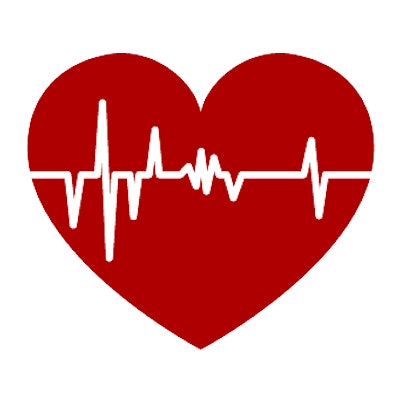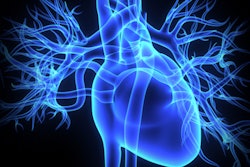
Combining self-rated health assessments with CT coronary artery calcium (CAC) scoring enhanced the test's ability to predict a person's risk of adverse cardiac events -- almost matching the accuracy of traditional risk estimation, according to an article published online February 15 in JAMA Network Open.
The researchers from Saudi Arabia and multiple U.S. institutions analyzed data from 6,764 participants of the Multi-Ethnic Study of Atherosclerosis (MESA) who completed a self-rated health assessment and underwent a CT CAC exam between July 2000 and August 2002. The individuals lived in one of six different U.S. cities, their mean age was 62.1 years, and 52.9% were women.
For years, estimating an individual's risk of cardiovascular disease, including coronary artery disease, has depended on identifying a specific set of traditional risk factors such as age and smoking history. Recently, however, several nontraditional risk factors have proved capable of improving upon this traditional risk assessment and garnered avid support from prominent medical societies.
In the current study, senior author Dr. Michael Blaha from Johns Hopkins Hospital and colleagues set out to investigate the association between two such nontraditional risk factors -- CT CAC score and self-rated health -- and their potential to improve risk prediction when used together.
The group found that a low CT CAC score and an "excellent" self-rated health assessment were both independently associated with a lower risk of cardiovascular disease events. Yet there was no statistically significant correlation between CT CAC and self-rated health (p = 0.57). Indeed, individuals with a CT CAC score above zero had a markedly increased risk of cardiovascular disease events, regardless of what their self-rated health was.
On the other hand, combining self-rated health with CT CAC scoring led to statistically significant improvements in the ability of CT CAC to predict adverse cardiac events, compared with CT CAC alone. The accuracy of using both tests was comparable to that of the gold standard -- risk estimation using traditional risk factors. The same effect was not observed when the researchers added self-rated health to a traditional atherosclerotic cardiovascular disease (ASCVD) risk estimator.
| Risk prediction for adverse cardiac events using different risk factors | |||
| Traditional risk factors | CT CAC score alone | CT CAC score plus self-rated health | |
| Coronary artery disease events | 0.712 | 0.725 | 0.734 |
| Cardiovascular disease events | 0.718 | 0.693 | 0.706 |
| All-cause mortality | 0.777 | 0.685 | 0.707 |
Combining self-rated health and CT CAC scoring may improve current clinical risk assessment, providing a quicker and more cost-effective strategy for cardiovascular disease risk prediction, be it for screening programs, population health management, or research, Blaha and colleagues noted.
"Although some overlap exists between the risk domains captured by the [CT] CAC score and self-rated health (e.g., traditional cardiovascular risk factors), there are distinct differences in the scope of risk integration by these measures," they wrote. "We believe that the improvements in statistics noted across all outcomes on adding self-rated health to CAC score ... hint at the complementarity of these measures for risk prediction."



















